Foxconn Blood Rage - If Looks Could Kill (UPDATE)
by Rajinder Gill on January 2, 2009 6:00 AM EST- Posted in
- Motherboards
It's All About Brawn... Well, Maybe
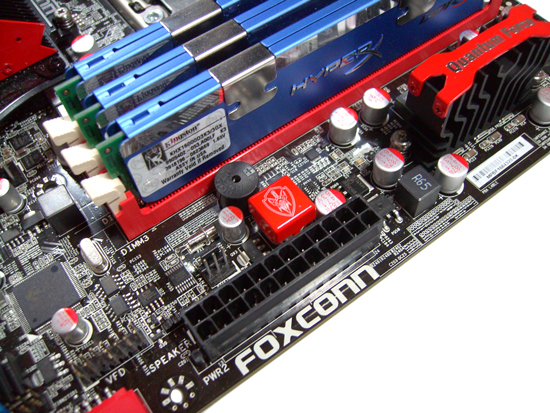 If your CPU and parts are anything like ours, you'll soon find that this "Force Reset" button is your new best friend. |
We're not sure if our situation is unique, but that statement above relates to the fact that all three of our boards refuse to cold or stop-cycle-boot without pressing the "Force Reset" button. Once the board is running, we can apply changes to BCLK reference clocks as long as we don't change major parameters such as clock multipliers. Foxconn's manual states that use of this button resets the system and tunes the board to perform optimally with your components. We think it's primary use is related to boot up memory module read/write leveling performed by the IMC to sense module density/capacitive loads and apply clock/data skew table algorithms and/or a simple reset of all IRQ assignments. This is something that usually happens during the black screen period of the boot cycle on other boards.
As an override, the idea is sound as those of us who push components find ourselves frequently going through complete power cycles to bring boards back to boot. For us though, our boards refuse to function properly without it. Regardless of stock speeds, moderate overclocks, or the more out-on-a-limb stuff, we need to press this button every time to get the board to fire up from a change to a related BIOS function. In order to overcome this we tried PSU swaps and five brands of memory using various ICs and attendant SPDs. A BIOS update should easily fix this problem if the boot cycle configuration is moved back into automated hands. We've alerted Foxconn to this and hope to hear back from them soon. If you happen to stumble across a combination of parts that results in this scenario, you'll need to keep the side panel off your PC case. However, if you run your motherboards out of a case -- as most benchmarking fanatics do -- this probably won't bother you.
Let's press on and get down to the maximum stable speeds we achieved. First up, we have a PCMark Vantage full suite pass at 4.1GHz.
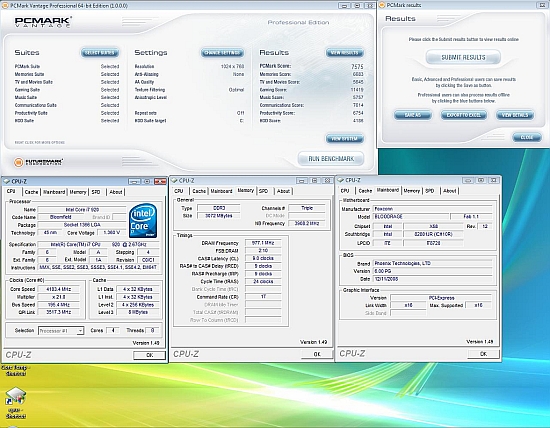 |
This overclock is right on the limits of our water-cooled setup for 24/7 use. 100% processor load temps are in the region of 75C, about as far as we'd expect the processor to remain stable and over the sensible mark for many. VTT/Uncore voltage is critical and needs a sizable boost over stock to around 1.52V for Vantage to pass a full test suite loop on our retail i920 processor.
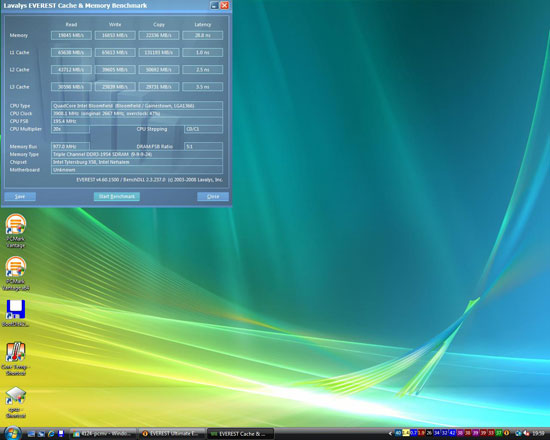 |
Everest Bandwidth on the Nehalem platform is beyond reproach using triple channel memory. In truth, there's little benefit running past 1600MHz, but we thought we'd try it as the Blood Rage virtually demands it. (This and the fact that the Kingston kit is specified to run 2000MHz at 1.65V). On a side note, longer eight thread enabled Prime95 runs were destined to fail unless we increased the Uncore voltage to around 1.54-1.56V. Using a lower memory divider ratio decreases the level of Uncore Voltage required; using the 2:8 divider resulted in a fully stable pass at 1.47V. The required level of Uncore voltage is largely processor dependant, though board design does come into play as we have noticed on the DFI and ASUS boards. With a good CPU, you may get away with less voltage.
Dropping the BCLK reference to 190MHz brings the required level of Uncore voltage down to 1.45V while running the 2:10 memory ratio at 1915MHz 1T in triple channel configuration. This passes a 1 hour OCCT run, multiple loops of PCMark Vantage, and several games with ease.
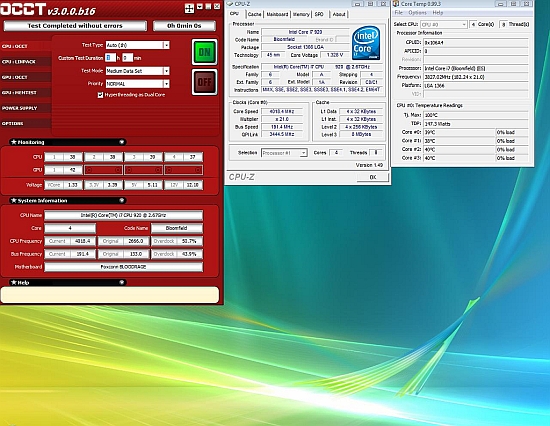 |
We included our test BIOS settings below for those that want to set up the board quickly before tuning it. However, there's not really much to it on this platform, other than the golden rule of keeping VTT/Uncore voltage within ~0.5V of VDDQ (VDIMM). Until we discuss additional secrets of Nehalem overclocking in the coming i7 Guide, it's a game of setting four or five key voltages and letting the BIOS do the rest. One other note to remember is to set the Uncore frequency to a minimum of 2X the memory multiplier. Failure to do so will result in a non-boot in all manual setting situations.
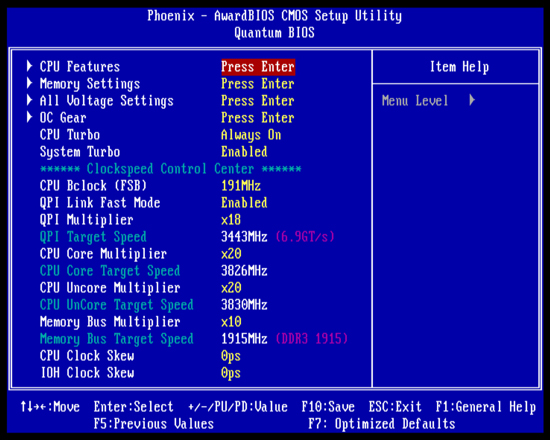 |
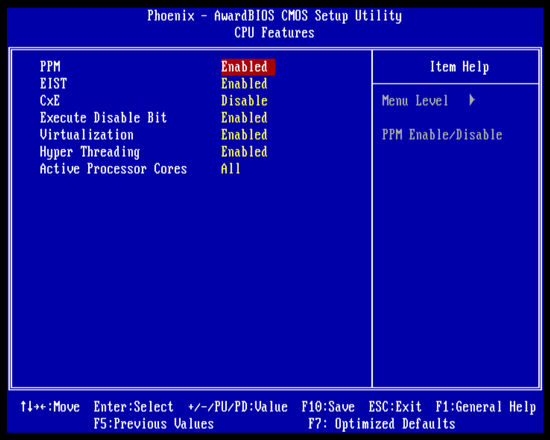 |
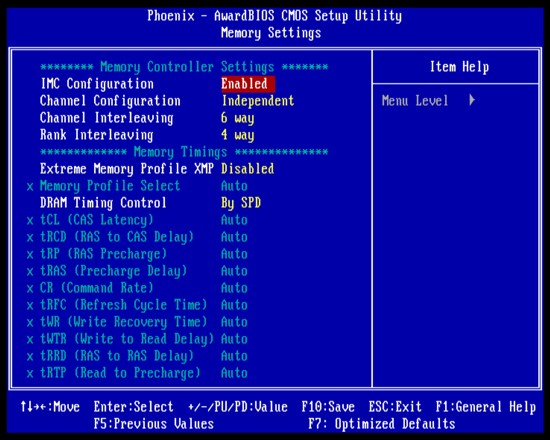 |
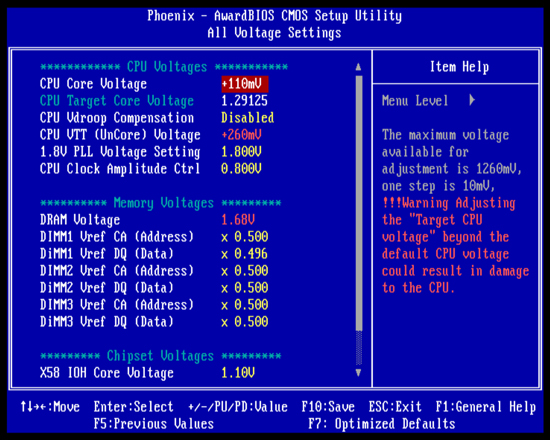 |
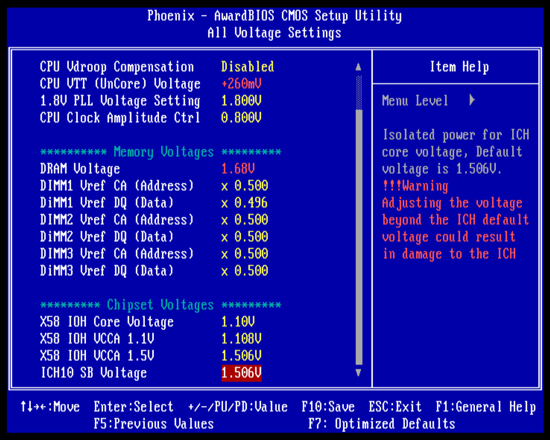 |
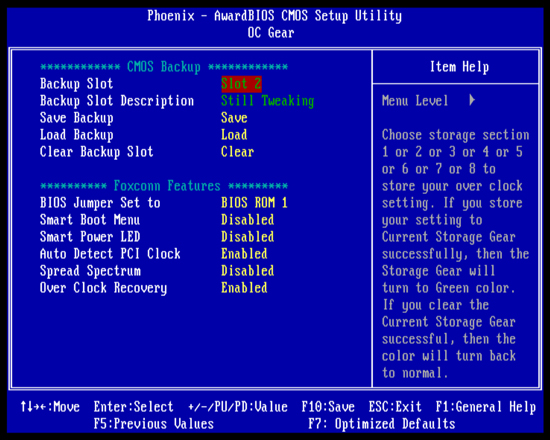 |
On the voltages screenshot you will notice that DIMM1 DQ Ref voltage is set to 0.496X. We found this situation manifests itself whenever we ran our Kingston or G.Skill DDR3-2000 memory in a triple channel configuration. All things being ideal, these values should retain as close to 50% of VDDQ (VDIMM) as possible, unless overshoot and ringback signal effects are affecting the DATA DQ sampling window excessively (which can and does happen at higher bus frequencies).
There is a massive 62 step scale available for each of the ref voltage levels; however DIMM1 remains locked to 0.496V regardless of what you select in BIOS. We tried multiple times to reset this value to 0.50X but found the board would reset to 0.496X after boot every time. We're not sure if this is a "red-button artifact" or if this is a BIOS bug at this point. We are leaning towards a BIOS bug, as a manual user setting should work properly. If it is a bug, then a change as small as this is in the wrong direction is enough to result in an incorrect logic interpretation at very high memory speeds. We have alerted Foxconn to this and await a response.










66 Comments
View All Comments
weevil - Friday, January 2, 2009 - link
Hope they get it working right.Keep up the good work guys.
Tough crowd huh?
badthings - Friday, January 2, 2009 - link
from the article:"Those that had positive experiences with the Black Ops by using it in the intended manner have been imbibed with plenty of thought provoking fodder to wonder what's coming next from the Quantum Force development team."
Is 'imbibed' really what you meant?
Other than that, thanks for the info. (and the laugh)
UNHchabo - Monday, January 5, 2009 - link
http://mw1.merriam-webster.com/dictionary/imbibed">http://mw1.merriam-webster.com/dictionary/imbibedLoneWolf15 - Sunday, January 4, 2009 - link
I think they meant "imbued". Still kind of an odd way to phrase things.shabby - Friday, January 2, 2009 - link
Is it me or will adding a 2slot high video card in the 2nd red slot block all of the usb/sata/ide ports at the bottom?DigitalFreak - Friday, January 2, 2009 - link
Yet another very expensive motherboard using crap Realtek network parts.Gasaraki88 - Friday, January 2, 2009 - link
I can't believe that this article is actually saying that this motherboard is good. ANY motherboard that doesn't work correctly out of the box even when not overclocking is not a working motherboard. Who is going to press that damn bios reset button everytime they want to boot up the computer? Who is going to know they need to do that? People will just assume that the board doesn't work and return it. If manufacturers can't get something that simple right before releasing the board to the public, the people should not be buying their stuff.AlterBridge86 - Friday, January 2, 2009 - link
Nice write up, but on the front page, the brief synopsis underneath the title has a typo..."The Blood Rage is one of the hottest looking X58 boards to grace out test bench, but what lies beneath the... "
I believe it should be grace OUR test bench, not OUT :)
Rajinder Gill - Friday, January 2, 2009 - link
sorry - fixed...thx
jackylman - Friday, January 2, 2009 - link
In the Feature Overview chart, you list 6GB of RAM as the max. I'm guessing this is the official Foxconn spec. Later in the article, you claim that the board will support 12GB, though it appears that you didn't actually test this.Can you clarify the max RAM situation? Thanks.